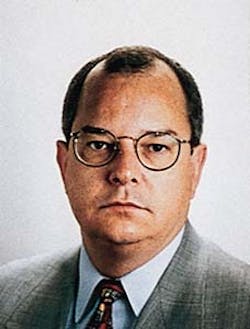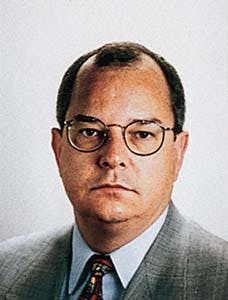Operators must become bigger stakeholders in technology
The declining involvement of oil and gas operators in research and development (R&D) is reducing profits for both the operator and the service provider.
Greater responsibility for technology development is now being shouldered by the service providers, and there is a growing concern that they are "drilling themselves out of a job." This concern is compounded when the financial results of the operator are compared with those of the service provider.
Reduced profitability
Compensation for R&D investments is provided mainly through the conventional commercialization process. However, even when compensation is based on performance, expectations are not always met.Currently, the operator awards contracts through a bidding process and the service providers submit bids based on their estimates of time-to-completion.
For instance, if a service provider won a $1,000/day bid which was estimated to take 10 days to complete, then the company would receive an equitable return if it were completed in 10 days, and no less.
However, if the technology is so effective that the project is completed early, the service provider will lose revenues. For example, if the project is completed in 6 days, they will lose $4,000 in revenues.
In this case, "a day saved for the operator becomes a day lost for the service provider."
An example of reduced profitability for the service provider and increased profitability for the operator is highlighted by a recent case in the North Sea.
The operator applied a new telemetry-regulated, angle-controlled stabilizer (Tracs) technology to directionally drill a 5,700 ft tangential section. This technology tripled the normal rates of penetration because the need for sliding (nonrotational drilling) was reduced.
The section was drilled in 4.4 days, 10 days ahead of schedule. With a minimal investment, the operator reaped tremendous rewards for investments made by the service provider, yet the service company lost 10 days worth of revenues.
Misconceptions
New technology development often begins with communication problems. Unfortunately, these problems are unrecognized until product implementation.In order for the technology to be truly "fit-for-purpose," the operator and service provider must cross-communicate all information concerning product specifications and working environments for which the technology will be used. This must be done in the early stages of product inception.
An all-too-common scenario for technology development begins when a customer identifies a technological need. Realizing an opportunity, enthusiasm for developing the technology is generated within the service company's organization.
However, when it appears that the technology will not meet all of the customer's objectives, there follows a period of disillusionment and panic. In the end, the service provider is punished for not meeting ambiguous goals.
This portrayal of events can happen if clearly stated objectives are not shared between the operator and the service provider.
Time-based incentive
Service providers are value-added organizations that bring advanced technology to the well site. Access to this technology enables operators to become more profitable. However, it is unreasonable for service providers to fund new technologies without receiving an equitable return on their investment.In the short term, it is not possible to do so without receiving incentives for their part in reducing the time-to-completion.
In the long term, operators should become bigger stake-holders in the advancement of technology. Service providers cannot continue to bear the majority of R&D costs for economic reasons and they should have an equitable share in the value created by the new technology. Compensation should be based on:
- Equitable gains created by bringing a well on production ahead of schedule
- Equitable gains created by increasing oil or gas production.
Risk and reward
(Fig. 1 [18,542 bytes]) shows a typical risk-and-reward scenario for the operator.The black bar represents the static decline in the value of the operator's asset because of the unavailability of new technology. When a new technology comes along, the operator invests time and money to acquire this technology, represented by the white bars dipping below the black line.
As the new technology is implemented, the operator's return on this investment compounds, shown by the green bars. If the technology had been released 2 years earlier, the operator's risk would still be the same, yet profitability would increase because the net present value (NPV) would be greater.
(Fig. 2 [13,632 bytes]) shows a typical risk-and-reward scenario of the service provider.
Unlike the operator's asset which can decrease in value, a service provider's NPV is static until it invests in research, development, and implementation of a new product or service. The return on these investments, shown by the green bars, may pay for the service, but may not justify the initial investment.
Often, the service provider's return on investment (ROI) is unaffected by the operator's extraordinary ROI.
Service providers have made extensive investments in technologies that have incrementally improved operational efficiency.
For instance, multilateral completion technology has enabled the operator to drill additional wells from an existing parent well bore. Although these completion systems are expensive, the elevated ROI achieved from a reduction in drilling costs, in addition to increased production rates, most certainly exceeds the initial expense.
In one case, a European operator estimated cost savings of $49 million because it eliminated the need for an additional offshore well.
One technology that is receiving considerable investment is the three-dimensional, rotary-steerable drilling system. This technology will someday enable the operator to extend the displacement of "tortuous designer wells" (complex, geometric well profiles). The provision for this technology will enable the operators to cost-effectively accomplish drilling objectives.
There is a current need for this technology, but unfortunately only a few service providers and operators are involved in promoting this effort. A concerted R&D effort is not taking place because there is no market incentive for the service provider to develop the technology based on conventional pricing mechanisms.
In addition, understanding the operator's needs is less than adequate, and when the technology finally reaches commercialization, there is a risk that it will not meet the original specifications or be "fit-for-purpose."
Aligned-interest agreement
One method to introduce technology as quickly as possible is through an aligned-interest agreement. This has the potential to maximize the ROI and ensure that the technology is "fit-for-purpose."(Fig. 3 [16,458 bytes]) and (Fig. 4 [15,521 bytes]) show how the operator's and service provider's ROI would benefit from such an agreement.
The shaded areas illustrate the positive effect that an aligned-interest agreement can make. The operator's initial investment may be larger, but with early involvement in development of the technology, the operator will have a "fit-for-purpose" technology that is brought into service much earlier than without the agreement.
The return on the larger-than-normal investment will be substantially improved by the cost effectiveness achieved from a "fit-for-purpose" technology. In addition, early application of this technology will substantially increase profitability, and a competitive advantage will be attained because the operator will have the technology before its competitors.
Under this same aligned-interest agreement, the service provider also benefits from earlier commercialization and reduced R&D expenditures. This comes from a clear understanding of what features the technology must have.
Agreement structuring
(Fig. 5 [13,036 bytes]) shows how such an agreement can be structured. Before funding is allocated towards the design and development of a new technology (far left point of the shaded area), several issues need to be understood and agreed upon.For instance, both parties must work as a team and come to an understanding based on cost-benefit relationships. A clear understanding of which benefits are "required" and which benefits are "desired" will lead to an agreement concerning product specification.
In addition, both parties must have a clear understanding of what level of reliability is expected as the technology evolves towards full commercialization.
In Fig. 5, the risk or reliability is characterized in terms of the mean-time-between-failures represented in hours along the y-axis. Milestones can be established, and staged compensation can be agreed upon using this risk-return ratio.
What is important is that design specifications, performance measurements, milestones, compensation, and the duration of the agreement have been agreed upon in advance.
The service provider must also have a clear understanding of product application so that utilization can be quantified. Changes within the operator's programs that influence the technology's future use must be communicated and understood.
The cost-benefit scenario from the operator's perspective must be made clear so that an equitable price is established and agreed upon. This must take into account the broader applications of the technology for other operators.
The effect of competitive technologies over time must also be analyzed and factored into the agreed upon price.
Once all of this has been defined, work can commence towards the development of the products and services.
The operator's commitment towards the effort continues by providing field trial opportunities and by working closely with the development effort to understand and evaluate the results of these trials.
At the point when both parties become satisfied with the progress of the project, and when the reliability milestone is met, initial field deployment can begin along with compensation for achieving the first stage.
This is represented by a percentage of the agreed upon commercial price shown along the progress line in Fig. 5.
Another factor that should be considered is the duration of the agreement. Both parties will benefit from an early understanding of what can be expected over a predetermined period of time.
Flexibility is key in developing the particulars for the aligned-interest agreement. The best aligned-interest agreements are those based on an equitable risk and return ratio.
For the long-term, the aligned-interest agreement provides the best avenue to ensure that the operator and service provider are optimizing their ROI by understanding the return before R&D investments are made.
Continuing to provide an adequate return to the investor means that service providers can continue to "drill themselves out of a job," yet still make a profit. And more important, the operators can be assured that the best "fit-for-purpose" technology will be made available in order to create beneficial solutions and greater value within an earlier time frame.
Unless both the operator and the service company successfully commercialize new technologies together, neither will be a long-term winner.
Jim Terry is the director of global drilling operations for Halliburton Energy Services in Houston. He holds a BA in business from San Francisco State University. Terry worked for Eastman Whipstock Co. and Eastman Christensen Co. on projects in Latin America, China, FSU, Middle East, Europe, and the North Sea until 1989. He joined Smith International in 1989 as vice-president for the Middle East, Far East, and Oceania until 1992 when Halliburton Co. acquired the drilling division of Smith International. From 1992 to early this year, Terry was based in London as Halliburton's director of drilling and wireline logging operations for Europe/Africa.
Copyright 1997 Oil & Gas Journal. All Rights Reserved.

